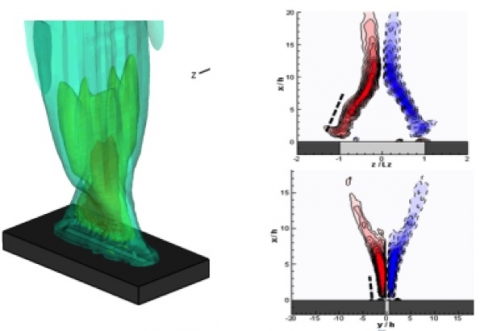The research is to explore the evolution of a synthetic (zero net mass flux) jet and the flow mechanisms of its interaction with a cross flow. An isolated synthetic jet is produced by the interactions of a train of vortices that are typically formed by alternating momentary ejection and suction of fluid across an orifice such that the net mass flux is zero. A unique feature of these jets is that they are formed entirely from the working fluid of the flow system in which they are deployed and thus can transfer linear momentum to the flow system without net mass injection across the flow boundary. Synthetic jets can be produced over a broad range of length and time-scale and their unique attributes make them attractive fluidic actuators for a broad range of flow control applications. The interaction of synthetic jets with an external cross flow over the surface in which they are mounted can displace the local streamlines and induce an apparent or virtual change in the shape of the surface and thereby effecting flow changes on length scales that are one to two orders of magnitude larger than the characteristic scale of the jets. This control approach emphasizes an actuation frequency that is high enough so that the interaction domain between the actuator and the cross flow is virtually invariant on the global time scale of the flow and therefore global effects such as changes in aerodynamic forces are effectively decoupled from the operating frequency of the actuators.
